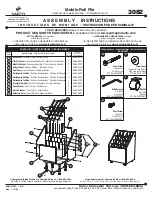
130
Setting of the «
maximum titration volume
» (Fig. 105) should always make sense.
It also serves as a safety criteria to prevent excessive titration, i.e. a possible overflow of the titration vessel.
The maximum titration volume can be set between 1.000 and 999.999 ml:
Fig. 105
4.6.5
Titration parameters
“End-Point titration”
When working with End-Point titration, there are some differences in context with linear and dynamic
equivalence-point titration.
As was already described in
4.6.2.3, End-Point titration, in a first stage, proceeds by continuously dosing until
a specific Delta value («
Delta endpoint
») at a distance from the set end value is reached. The dosing speed of
this first stage can be set in terms of % on the «
Dosing parameters
» menu. Subsequently, titration continues in
a drift-controlled manner or with a fixed holding time with a linear step width between the Delta value and the end
value. As soon as the end value has been reached, a defined waiting time is observed. If the end value is fallen
short of, one or more than one additional titration step(s) is/are added until the end value has become stable.
The waiting time at the end is referred to as «
endpoint delay
».
In the case of an End-Point titration for two endpoints, it is possible to set both of the endpoints with different
Delta values and End-Point delays (Fig. 106 and Fig. 107).
Fig. 106
Fig. 107
















































